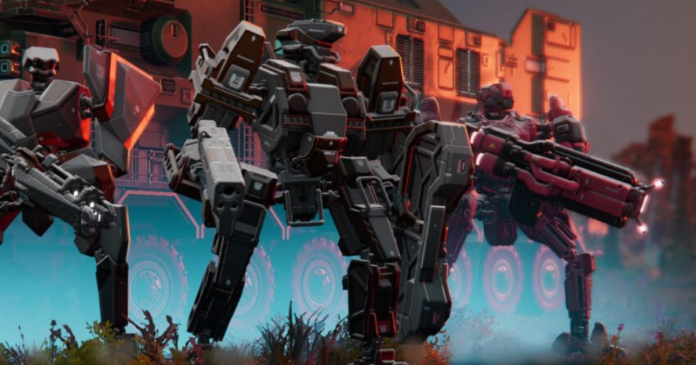When I first played the demo for Phantom Brigade, I realised it did something I’d been wanting from games for years. It’s a turn-based game that uses the magic of our computer boxes to produce fantastic action scenes. Not only that, they’re action scenes featuring giant robots, which astute readers may have noticed I have a fondness for. (Taking screenshots, I should add, has been an absolute joy, as I’ve scrubbed back and forth through each turn’s timeline, rotating and zooming the camera to find the perfect angle of huge mecha smashing into each other and exploding.)
There’s nothing particularly original in how Phantom Brigade achieves this. It’s essentially Frozen Synapse blended with Into the Breach, with a dash of Battletech for good measure. You have a squad of mechs with which to engage in turn-based battles with enemy mechs and tanks. Rather than moving and shooting with each unit in sequence, you plan out the actions of your squad over each five-second turn, then hit the execute button and watch your tactical brilliance play out in real time. Where Into the Breach comes in, other than the big robots, is your ability to see the predicted actions of your opponent. Forewarned is forearmed, as they say, and you can use your Cassandra-like powers of prophecy to move out of enemy fire arcs and line up perfect kill shots of your own.
This core combat, when it works, is absolutely bloody brilliant. Your mechs weave balletically through streams of bullets, gliding past each other with precision and unleashing laser, bullet and missile-flavoured death. Once you get the hang of the slightly abstruse melee attacks, your sword-swinging units can swoop past opposing mechs and slice off limbs, or smash into lighter foes to knock them down before swiftly dispatching them. Get it wrong, usually by missing the fact that you’re going to run two of your units into each other, or accidentally wandering into a stream of bullets, and chaos ensues.
Each turn is a little puzzle to solve (although neither as precise nor as punishing as Into the Breach) and your reward is a joyful carnival of carnage you can savour in slow motion from any angle you wish. Or study to figure out exactly where it was you goofed, you big goof.
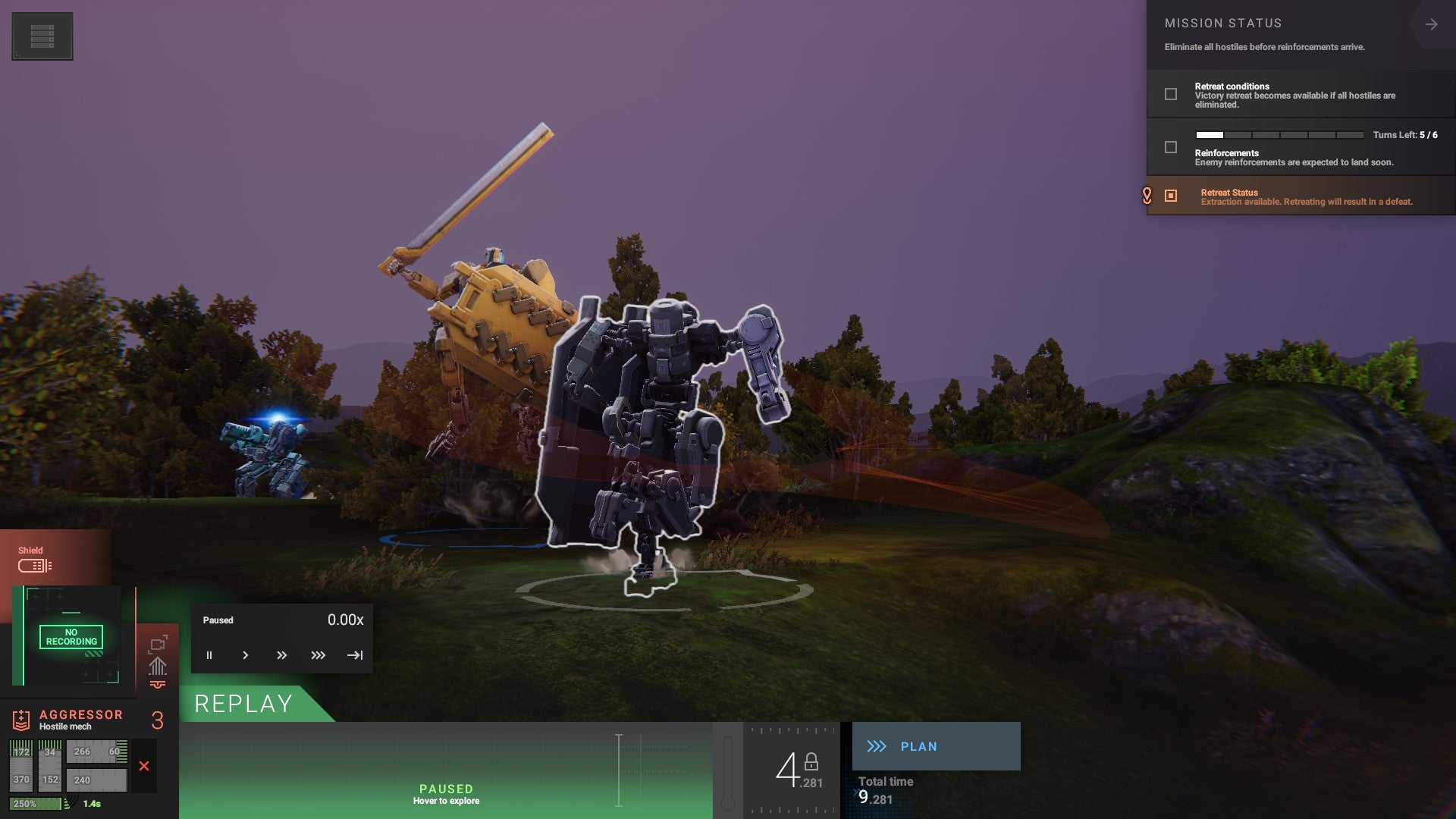
The mechs themselves aren’t unique models, but generic frames kitted out with different combinations of armour and weapons. You can make zippy ‘bots with tissue paper armour, aggressive brawlers, or lumbering artillery pieces on legs. The system is simple enough, with two weapon and four armour locations, plus the option of slotting in different gubbins like reactors and heatsinks. It’s fun and flexible, but let down by an infuriatingly awkward interface that never quite displays the information you want when you want it, and always seems to take a few more clicks to do anything than it should.
Sadly, the sloppy UI extends to the rest of the game. Assigning orders during battles is bafflingly inconsistent. To schedule an attack action, you place it on the little planning timeline for the unit and then pick a target. Easy! To move, you just click where you want to move to, but you can’t choose when you want to move. Instead, you have to assign wait periods which, like moving, aren’t placed directly on the timeline, but require you to stretch out a line on the map itself. It’s weird and unintuitive.

The UI for the campaign isn’t any better, and probably feels worse because it’s the weakest part of the game by far. There is a barebones plot about your homeland being invaded and your elite mech unit with experimental prediction technology being the ones to liberate it. This translates to slowly driving around in a big truck, engaging (or avoiding) enemy patrols and hitting locations to drive the occupying forces away.
The map itself is divided up into a number of provinces. Once you’ve softened up the invaders in a given province, you can call in the resistance to take it back, triggering a timed contest in which you have to win a certain number of objectives before the resistance forces suffer too many defeats. Once you’ve liberated a province, you can move onto the next one. Rinse and repeat. There are random events that usually boil down to sitting in one place for a few hours of game time and/or giving up some supplies in the hope of gaining a reward, or avoiding a penalty. In either case, they just don’t seem worth bothering with. The potential losses or gains are never significant and there’s not enough personality in your pilots or any of the faceless, nameless NPCs to make you care.
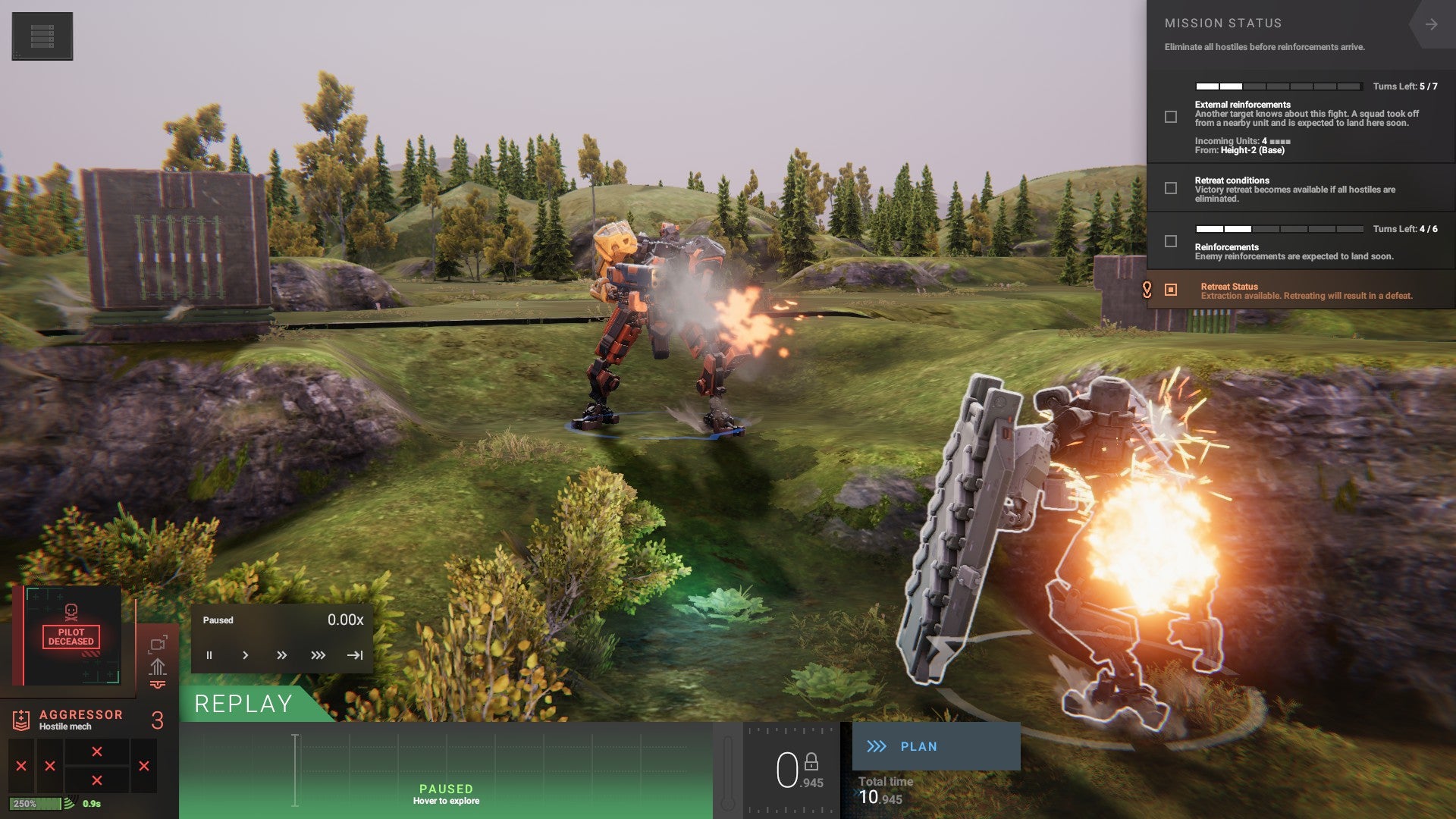
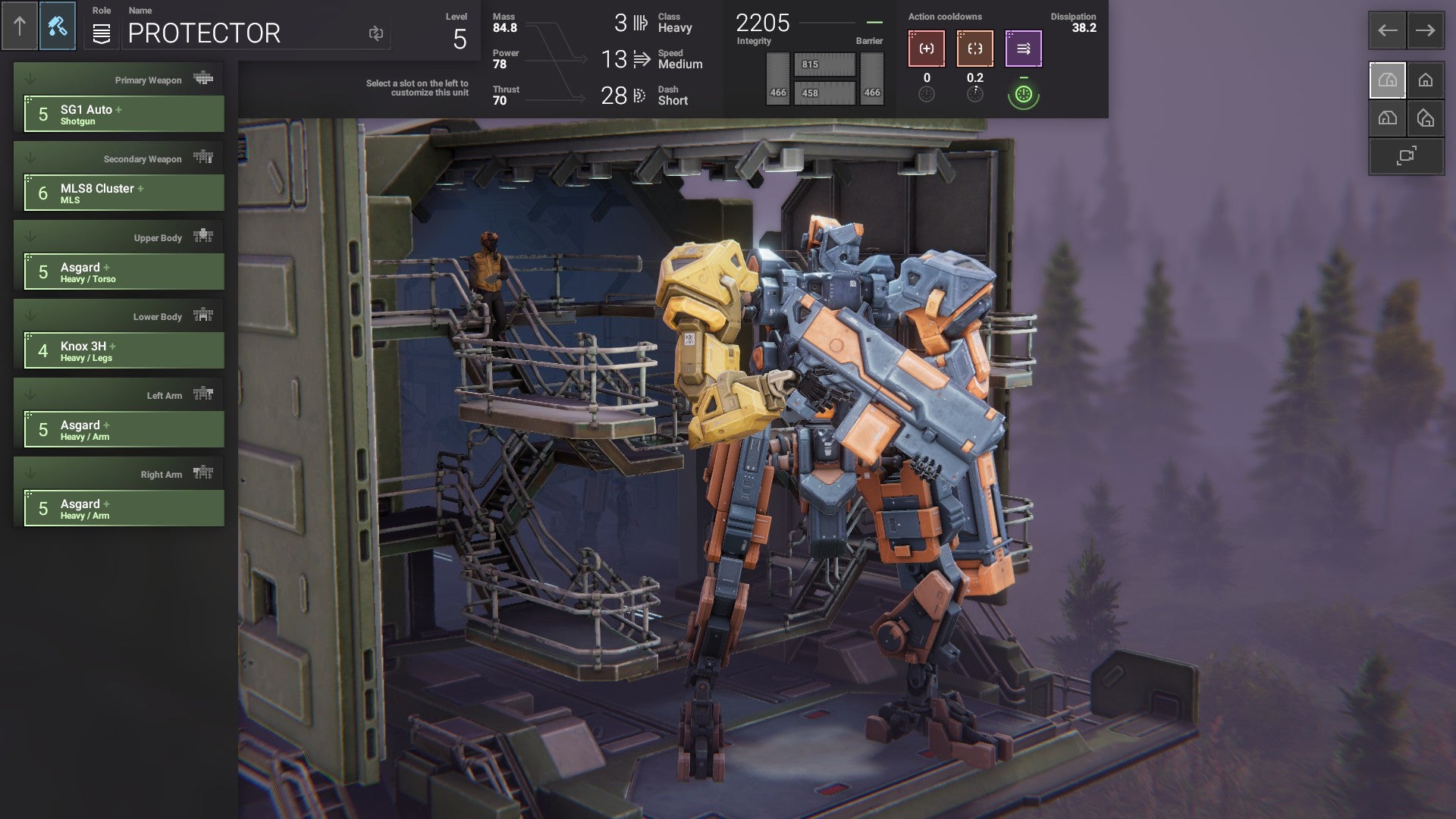
The big problem is that it becomes repetitive really, really quickly. After a couple of provinces (there are over twenty) the chances are that you’ll have locked in some good builds and you’ll be ready for anything that the enemy has to throw at you. While it’s fun to tinker with your mechs, after a while there’s no real reason to, especially because the artificial intelligence, well, isn’t.
Enemies don’t seem capable of doing anything other than charging towards you and shooting, let alone responding to your tactics. I’ve had battles where the entire opposing force starts out by deciding to shoot at one of my units that is safely behind a large hill, and then continues to do so while the rest of my team picks them off one by one. Completely avoiding any and all damage is pretty easy, but I found myself getting sloppier and sloppier as time went on because mech damage is quickly repaired after battles, and only having parts fully destroyed is enough to have any real impact.
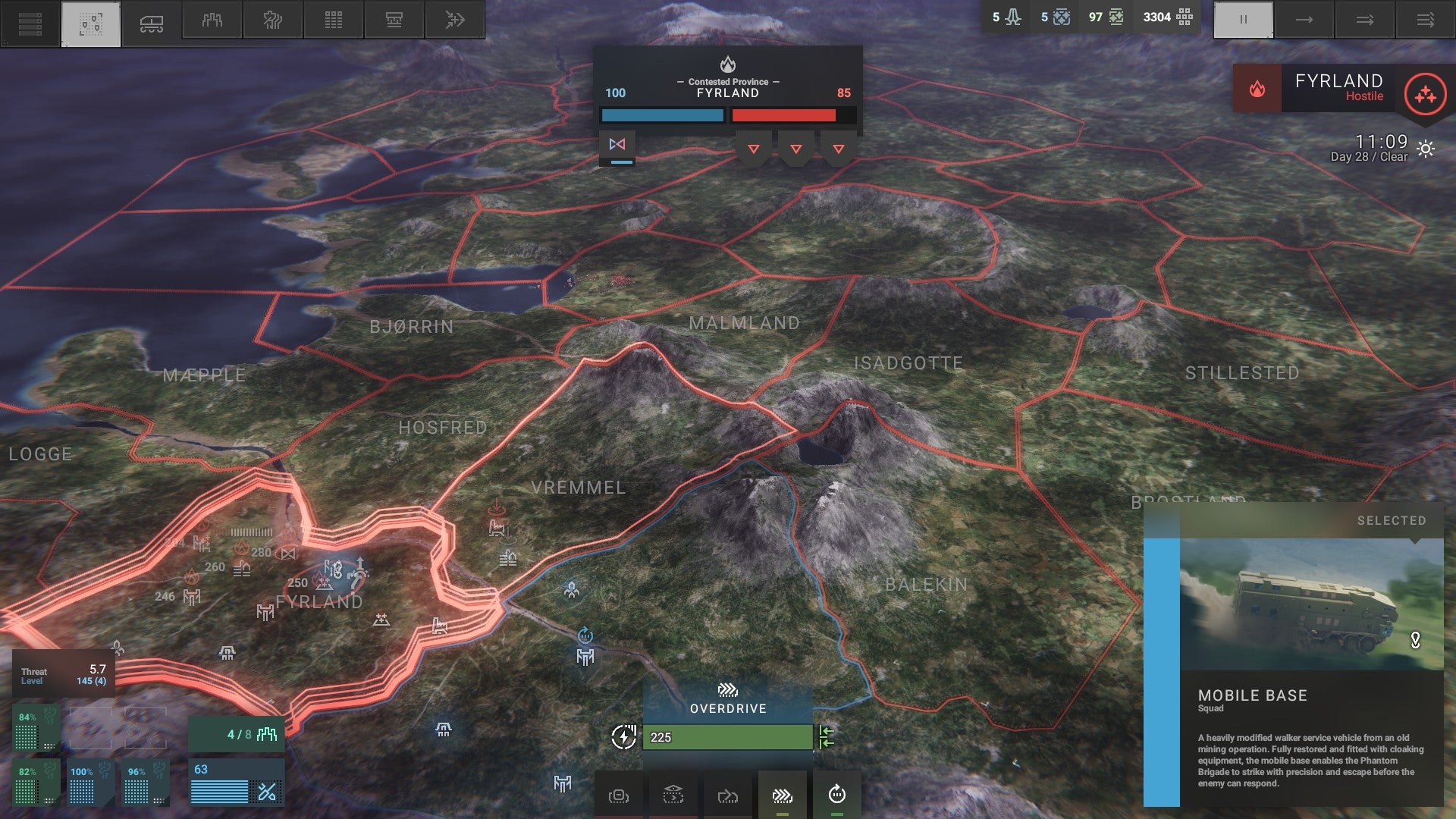
Worst of all, the system is very easy to exploit. A heavy mech with a blade can easily stunlock any light or medium opponents and the heavy rotary cannon kicks out so much damage that a mech equipped with one will easily outlast any opponent, regardless of return fire or the tiny amount of damage caused by overheating.
All in all, the sense is that while Phantom Brigade has a fantastic core, everything else falls short, like a perfectly cooked burger surrounded by limp lettuce and a stale bun. I can’t remember the last time I felt so let down by a finished game after such a great time with its demo. On the plus side, the problems all seem eminently fixable because the foundation is so solid. Just some UI tweaks and some polish to the campaign would make the box of rocks AI a lot more forgivable. As it stands, it’s absolutely a game that turn-based strategy and mecha fans should try, but not necessarily one that they should buy. Wait and see, if you can figure out how.
www.eurogamer.net

